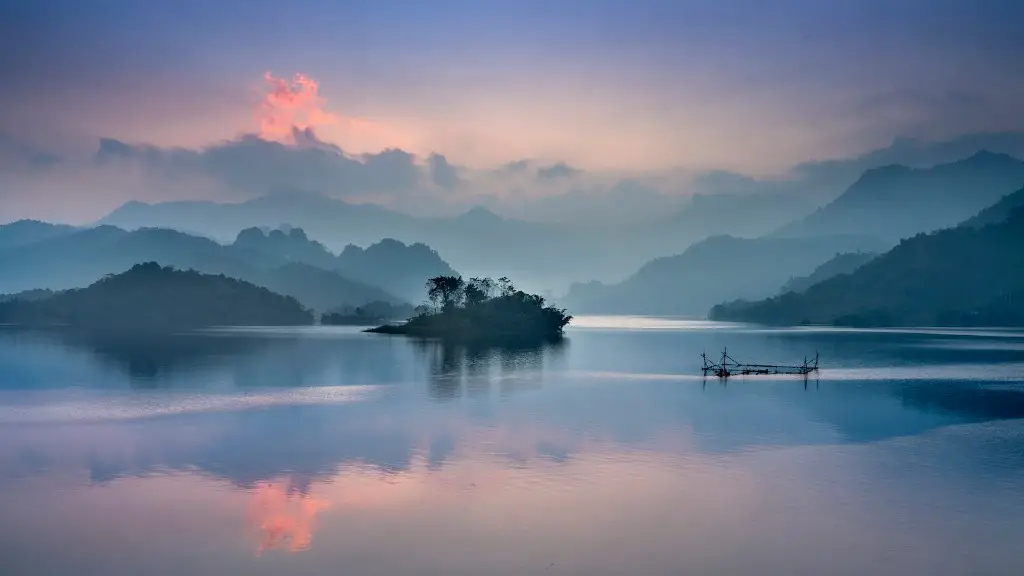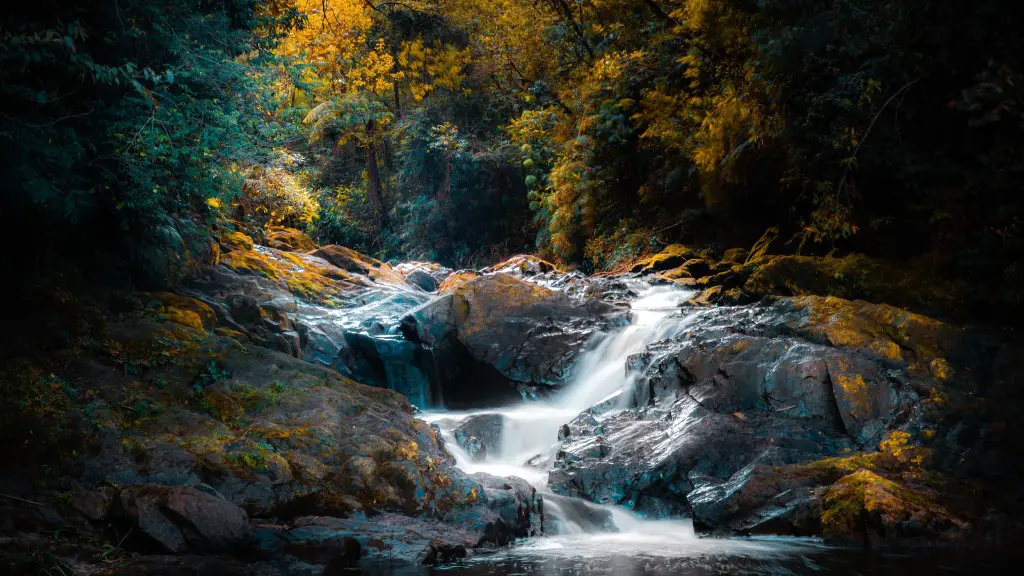Introduction
The Nile River is one of the oldest and longest rivers in the world, forming the lifeline of many ancient civilizations. Spanning from African countries such as Ethiopia, Uganda, and Egypt, the Nile River is an important source of water, food and transportation for millions of people. A closer look at the river reveals why it has been so important for so many years.
Physical Characteristics
The Nile River is approximately 6,853 kilometers (4,258 miles) long and is considered one of the world’s longest rivers. This makes it longer than China’s Yangtze River, the Amazon River in South America, and the Mississippi River in the United States. It begins in central Africa and flows northward through northeastern Africa and Egypt, ending in the Mediterranean Sea.
As far as physical characteristics go, the Nile River is usually characterized by its vast blue-green waters that seem to nearly touch the horizon. It has an array of fascinating wildlife, including fish, crustaceans, turtles, waterfowl, aquatic plants, and various insects. One interesting feature of the Nile River is the presence of its large Nile crocodiles that sometimes come out of the water to sun themselves on the riverbanks.
The Nile is divided into two branches, the White Nile, which originates in Lake Victoria and follows a northeasterly course, and the Blue Nile, which runs from Lake Tana in Ethiopia to Khartoum, Sudan. In ancient times, the Nile was known as the “Father of African Rivers.”
Importance of The Nile River
The importance of the Nile River to the nations and cultures along it cannot be overstated. Not only does it serve as a source of drinking water, it also provides irrigation for acres of crops. This contributes to the healthy and plentiful food supplies that have supported the people of Africa for centuries.
The river’s strong currents and placid waters also make it an ideal route for transportation. For centuries, traders and merchants have used the Nile for shipping goods along its length. The waters provided sustenance for the Pharaohs’ armies as they launched military campaigns and set out to explore new lands.
It has also been said that the Nile holds a spiritual significance for many of the African people living along its shores. It has been referred to as the “lifeline of Africa” – a source of spiritual sustenance and renewal.
Environmental Issues
The Nile is facing many environmental issues due to growing population and economic development. Pollution is a huge issue, as many of the factories lining the river release toxic chemicals and other pollutants. For example, the White Nile delta region has been heavily hit by sewage dumping, while the upper part of the river is further polluted by agricultural runoff.
The waters of the Nile are also diminishing due to over-extraction for farming and other uses, as well as climate change. As the river dries up, it becomes more difficult for irrigated crops to receive the water they need to survive. Additionally, periods of drought have caused the water table to drop, leading to an increasing threat of water shortages throughout Africa.
Conservation Efforts
In recent years, governments have made an effort to protect the river from pollution and over-extraction. Waste treatment plants have been installed along the river to help reduce pollutants entering the river and improve the overall water quality. Strict new regulations concerning waste and sewage management have also been implemented to help control the pollution problem.
Furthermore, new irrigation methods are being developed that allow farmers to be more efficient with the river’s water and reduce the amount of over-extraction. For example, the tillage-and-ridge system of irrigation works to preserve more of the water while still providing farmers with sufficient amounts of water for their crops.
The Future of The Nile River
The future of the Nile River is linked to its ability to adapt to the changing climate and the new human activities along its banks. The current level of economic development and population growth, as well as the ongoing climate change, require new policies to ensure a sustainable future for the river.
The governments of the countries along the Nile have recently begun a joint effort to protect the river and its ecosystems, through the “Nile Basin Initiative.” The initiative seeks to improve trans-boundary management of the water resources of the Nile River and to develop a long-term vision for sustainable river basin management and development.
In order for the Nile River to remain a vital resource for centuries to come, governments and people must be willing to work together to ensure its survival.
Impacts of The Nile River
The Nile River has shaped many aspects of the African cultures and civilizations that have developed alongside its banks. From providing a route for trade and transportation to supplying the vital water and food needed to sustain these ancient cultures, the Nile River has been a major influence on African history.
Throughout the centuries, the river has been a source of inspiration to poets, writers and artists, who attributed a religious significance to it. The river has been seen by some as a magical source of life and a symbol of fertility and rebirth.
In modern times, the Nile remains an integral part of African life. The Egyptians have long built their homes and lives around the river and continue to do so today. In fact, some of the most impressive structures of ancient Egypt were built next to the Nile, such as the Great Pyramids.
Effects of Tourism on The Nile River
The Nile River has also become a popular tourist destination in recent years. Tourists come from around the world to experience the exotic beauty of the river and its surroundings. However, the influx of tourists has also brought with it some potential problems.
For example, many tourists litter the riverbanks, leaving behind trash and contributing to pollution levels. Additionally, boat rides are becoming more and more popular, which increases boat traffic in the waters. This can disturb aquatic wildlife, damage fragile habitats, and cause erosion.
As the popularity of Nile River tourism continues to increase, it is important for the government and local communities to take measures to protect the health of the river. This could include better garbage pickup and recycling, improved regulations on boat traffic, and more public education about the importance of preserving the river.
Conclusion
The Nile River is an important source of life, sustenance and inspiration to the African nations and cultures that rely on it. It is a symbol of African strength and resilience, and a reminder of the power of nature. As we look to the future, it is up to us to take measures to protect the river and ensure it can remain a lifeline for generations to come.


